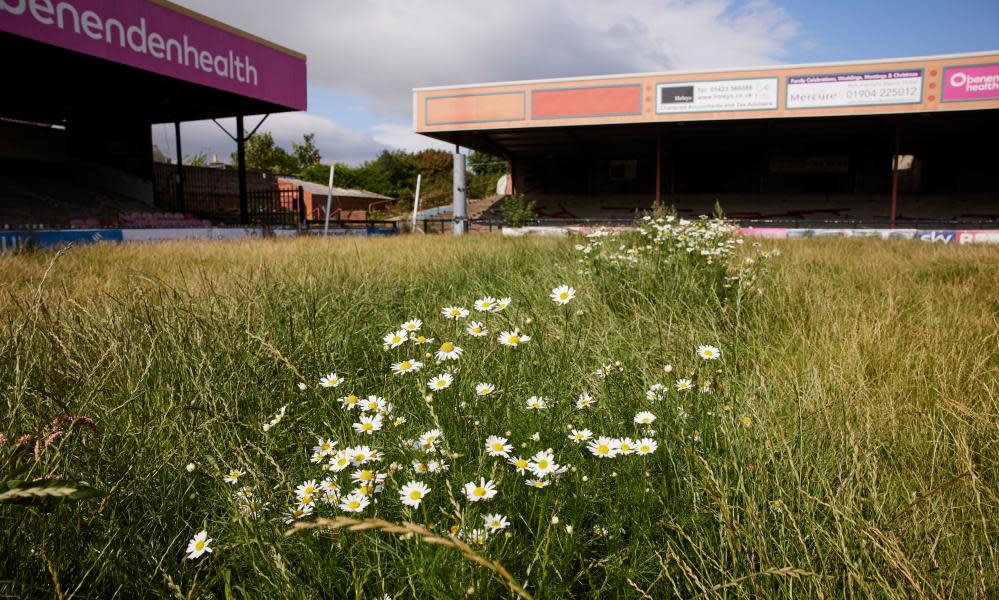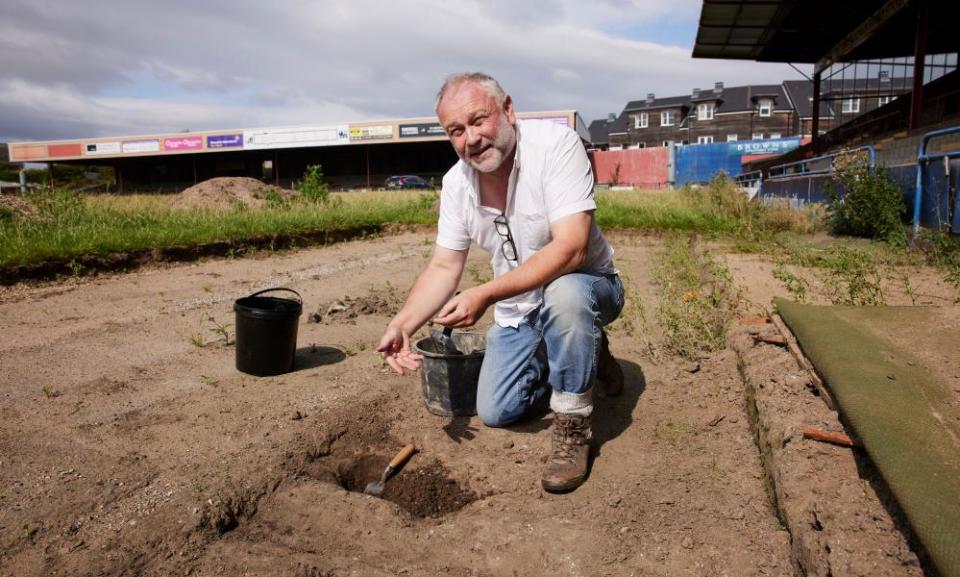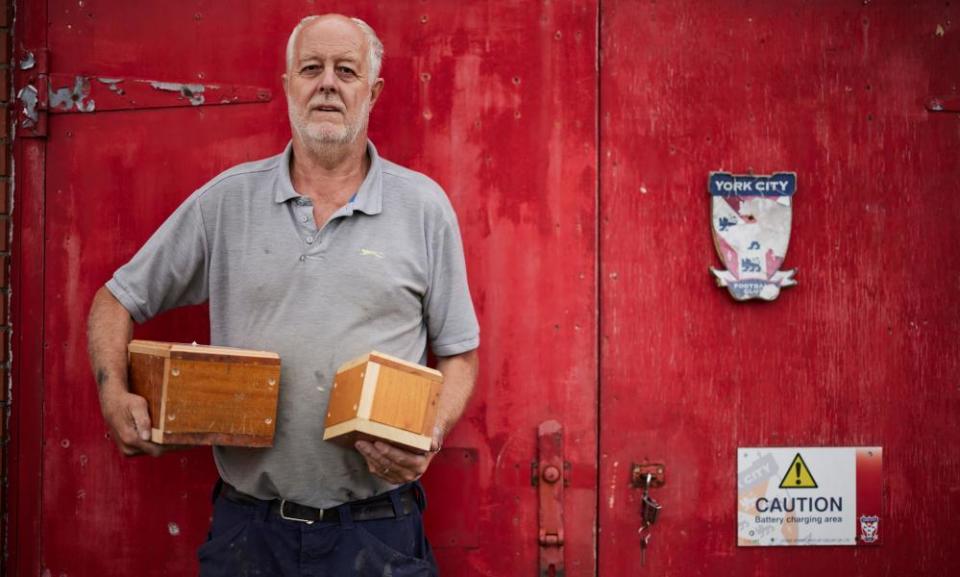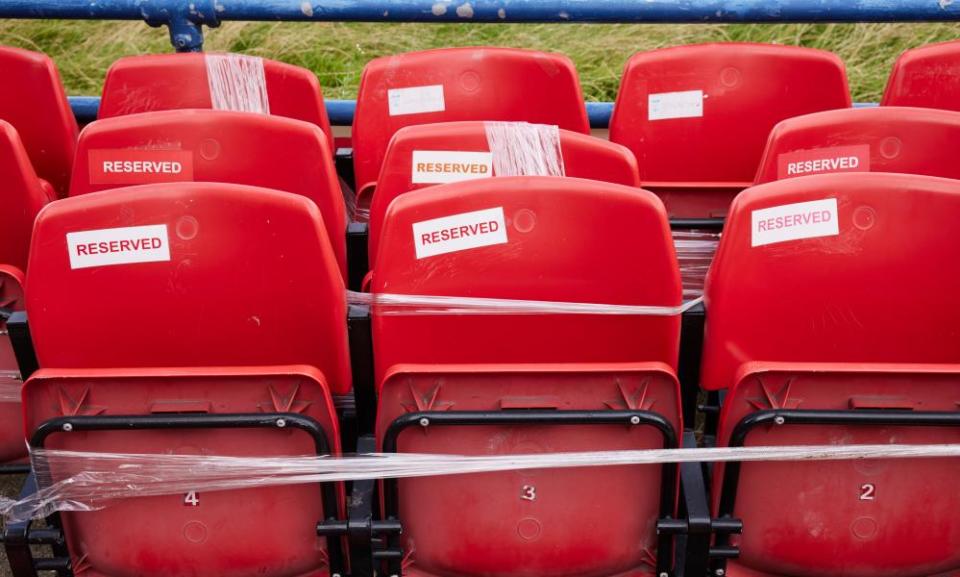York City FC seeks relatives to find ashes buried under old pitch

The buddleia is pushing through the concrete of the Grosvenor Road stand at Bootham Crescent. Nature has reclaimed York City FC’s once pristine pitch, and knee-high grass sways in the breeze in the centre of the dilapidated ground.
It doesn’t look like the site of a groundbreaking historical project, but the small holes in a carefully excavated site behind where the goal once was tell a different story.
Historic England is racing to find the remaining ashes of York City FC fans buried in the pitch in the past 89 years, as part of a project to memorialise a condemned football stadium for the first time.
“Heritage used to mean old monuments and porcelain in country houses but people are beginning to understand that heritage is also about identity and belonging – and it’s something that you make in the present,” says Keith Emerick, inspector of ancient monuments at Historic England.

“If this was a prehistoric monument we’d want to preserve it as a great testament to mass behaviour. We normally don’t do that when it’s a completely unexceptional football ground, but perhaps we should.”
The organisation has been given greater say in the ground’s redevelopment because it sits on the edge of a conservation area. After consulting with fans, the new Persimmon housing estate that will probably replace Bootham Crescent will now have to retain an eight-metre wide section of the Popular, or “Pop”, stand – including a tunnel that acted as an air-raid shelter during the war – and a part of the pitch encompassing the centre circle, which will become a park.
Once permission is granted by the Ministry of Justice, and with the families’ consent, the ashes of fans buried at the ground will be reinterred in a memorial garden and a flagpole erected flying a replica of the club flag. Historic England has also created a series of short films with archive material and interviews with fans.
Jason Wood, the archaeologist and heritage consultant leading the project, explains it is only thanks to delays caused by the pandemic and wrangling over the cost of the land – its sale remains incomplete, even after decades of wrangling – that archaeologists have been given a window to uncover all the remains.
A combination of ground-penetrating radar – more commonly found at the scenes of Roman excavations – and the long memories of groundsmen have uncovered 10 sets of ashes, but Historic England believes at least 10 more may still be buried.

The club made a callout to fans, inviting them to take part in a dig. “One woman arrived and just said to me, ‘I’ve come for my sister’, says Wood. After a few false starts, ashes and the remnants of a picture of her were uncovered. “She was in tears, I was close to tears, it was an extraordinary moment,” says Wood. “We are dealing with the history of real people here. This is a project where archaeology, memory and community collide.”
The ashes already uncovered have been transferred into wooden caskets made out of the ground’s old wooden seats by the assistant groundsman, Mal Ibbetson. “It just felt right that they should be given a proper home,” he says.
Fans have already taken many mementos from the ground, some more unusual than others, he adds. One man bought a urinal to make into a water feature in his garden. Another said he wanted a toilet seat – from the women’s toilets, as the men’s were more likely to have been urinated on.
“I asked him what he was going to do with it,” says Ibbetson, who used to crawl under the turnstiles as a boy to watch games to avoid paying sixpence. “He said he was going to make a picture frame out of it, and I thought he meant for a picture of Bootham Crescent. But he says: ‘Oh no, it’s for a picture of my wife!’”

There have already been attempts to preserve the cultural significance of other grounds. The housing development that replaced Highbury, home to Arsenal for 93 years, retained the shells of the art deco stands while the pitch was transformed into a communal garden. But there are many examples of housing developments that simply tarmacked over grounds, and some – such as Sunderland’s former home Roker Park – now display signs saying “no ball games”.
Wood, who also worked on Highbury, says the key is to convince developers that heritage preservation boosts value. “We try to convince them that preserving history is valuable not only to the community, but to the people buying new homes.” He hopes that other clubs, such as Everton who will be leaving Goodison Park to move to Bramley-Moore Dock, will work with Historic England to create a piece of living history for fans.
For Tony Cole, who has stood on the David Longhurst Stand since the age of 11 and photographed the club and its supporters for many years, memorialising the ground means a lot. “We’ve shared huge amounts of experiences here, and I think people recognise that they can’t just let that go without comment,” he says.
He went to see York City, who have competed in regional non-League football since 2017, lose their first game at their new 8,500-seater LNER Community Stadium on the outskirts of town on Saturday, but is not sure he will be back. “Without the terraces, it feels anodyne and soulless and it doesn’t reflect what I want from football,” he says, looking around the crumbling ground. “I found what I wanted here. This is home.”

 Yahoo News
Yahoo News 
